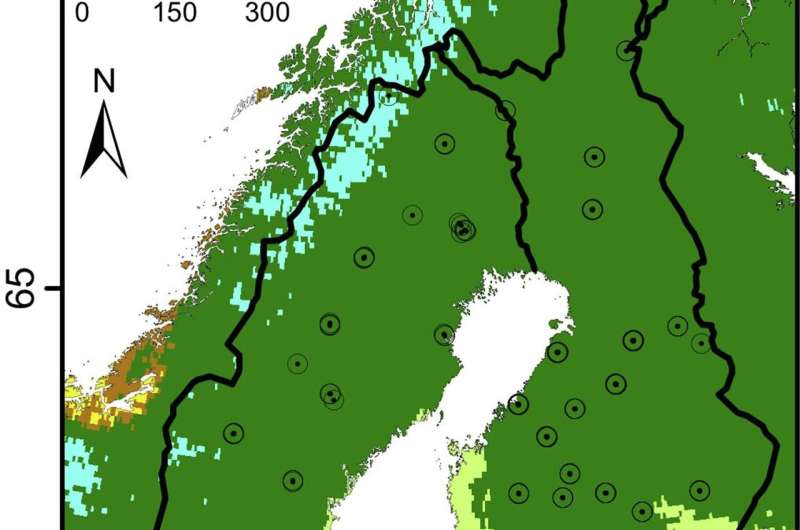Risk of lower groundwater levels in northern Sweden with a warmer climate

When the winters get warmer in northern Sweden, there is a risk for groundwater level decline, despite heavy precipitation. The villain in this story is lingering ground frost that prevents snow meltwater and rain from filling underground reservoirs. This is the finding of a new thesis from the University of Gothenburg.
Precipitation in most of Sweden is sufficient to keep groundwater storage levels in a state of balance. However, the effects of climate change in recent decades, with dry summers and mild weather in the midwinter risks adversely affecting groundwater, especially in northern Sweden.
"When winter months are warmer, much snow melting takes place while the ground is still frozen. This means that groundwater reservoirs are not refilled as much as they used to be. The water flows on top of the frozen ground into lakes and streams instead of infiltrating underground," says Michelle Nygren, Ph.D. student in geology at the University of Gothenburg.
More mild weather days
Michelle Nygren has analyzed groundwater levels, precipitation and temperature in Sweden and Finland, among other countries, over the last few decades, and she sees a clear increase in the number of mild weather days during the winter months of December–February. This trend is particularly evident in southern Finland. Winters were on average colder during the 1980s, which resulted in a greater proportion of precipitation in the form of snow, followed by more snow meltwater later in spring. When the ground frost thawed, more of the meltwater could infiltrate into the ground, replenishing groundwater levels. The growth season also started later, which contributed to a smaller amount of meltwater being absorbed by vegetation.
"A slow melt of the snow is best for groundwater replenishment. The climate-driven change is most evident north of Stockholm and in Finland, which increases the risk of lower groundwater reservoirs. As summers become warmer, rain in the summer months is not sufficient to fill the groundwater reservoirs. The water evaporates or is absorbed more by plants."
Higher risk of wildfire
She points out that this leads to an increased risk of wildfire, because moisture levels in the soil decrease due to lower groundwater levels. There is an increased need to irrigate dry arable land, which costs a great deal of money. In southern Sweden, the effects of warming climate on groundwater vary. Because there is ground frost, precipitation during the winter months may seep through the soil and fill the groundwater reservoirs. This in insufficient in the eastern parts of southern Sweden and Gotland, which receive too little rainfall in general. There, increasingly hot summers can lead to problems with drought and wells drying up.
"We risk overuse when we pump groundwater. This is particularly true for smaller groundwater reservoirs, which respond quickly to weather. Larger reservoirs are more robust and can withstand a year of drought now and then but, in contrast, take longer to recover after many years of drought."
The IPCC reports point to the climate becoming ever warmer, and Michelle argues that in 100 years, the amount of ground frost will probably have decreased so much in northern Sweden that groundwater problems will also decrease. But what will do until then?
"We have enough water in Scandinavia, but it can be very expensive for society as costs for water purification increase. Agriculture may need to switch to other crops. Like the Swedish Board of Agriculture, I believe that we need to retain more water in reservoirs or reuse wastewater. Groundwater is important for our water supply, and we need more studies of the impacts from climate change."
More information: Michelle Nygren et al, Recent trends in hydroclimate and groundwater levels in a region with seasonal frost cover, Journal of Hydrology (2021). DOI: 10.1016/j.jhydrol.2021.126732
Michelle Nygren et al, Changes in seasonality of groundwater level fluctuations in a temperate-cold climate transition zone, Journal of Hydrology X (2020). DOI: 10.1016/j.hydroa.2020.100062
Provided by University of Gothenburg




















